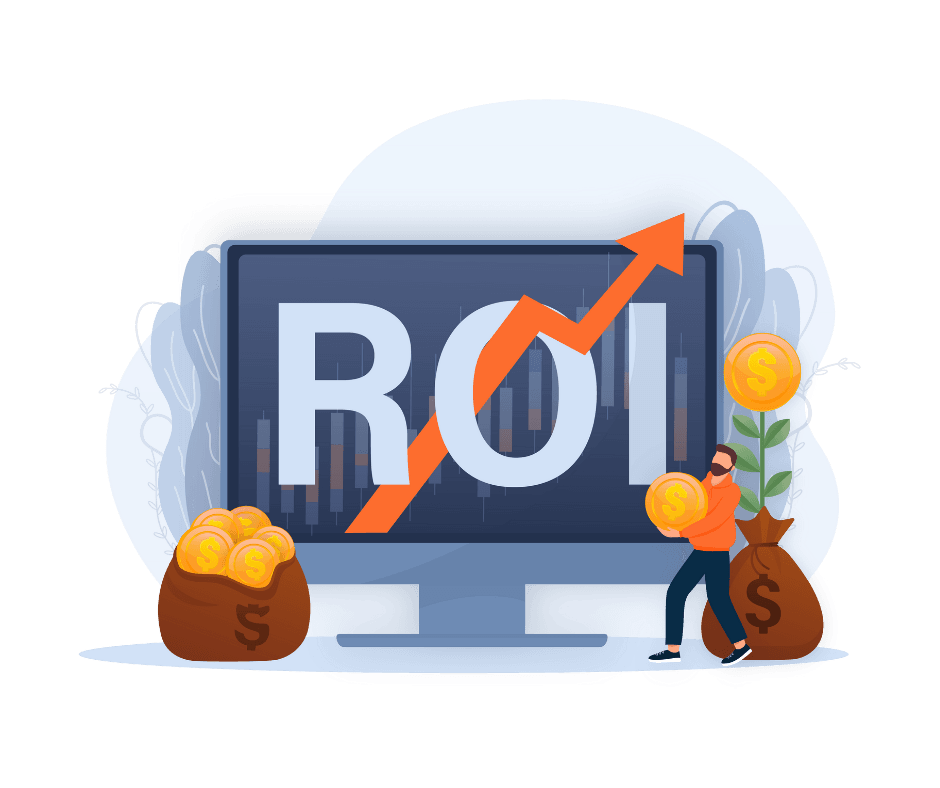
If you’ve ever spent hours creating content, blog posts, videos, social media posts and wondered, “Is this even making me money?”, you’re not alone. Content marketing is powerful, but without tracking ROI (Return on Investment), you’re basically driving blindfolded.
Calculating your ROI (Return on Investment) for content marketing gives you the insight you need to know what to do, what to change, and what to throw away. The good news? You don’t have to guess. There are accurate, measurable methods for determining the impact of your content on your business development.
In this article, we’re going to take you through six methods that make measuring ROI simple to do, and dare we say it, even kind of fun.
1. Track Your Site Traffic and Engagement
One of the easiest beginnings is to track how much traffic your content is driving to your site. Tools like Google Analytics show you which pages are performing strongest, how long people are staying, and whether they’re exploring other areas of your site.
If your new blog post or case study is providing a discernible increase in traffic, you can be sure your content is being seen. Even better, pair this with engagement metrics such as average time on page, scroll depth, and bounce rate, because it’s not just about seeing visitors, it’s about seeing them care.
And remember, content works best when your website is ready to convert. An optimised business website that loads quickly and is mobile-friendly ensures that all the traffic you’ve worked so hard to attract doesn’t go to waste.
2. Measure Lead Generation from Content
Ultimately, the majority of businesses create content for lead generation. Whether it is by a download of an e-book, a registration for a webinar, or a fill out of a “Contact Us” form, all are things that can be directly traced back to your marketing efforts.
You can track these leads by setting conversion goals in Google Analytics or in your CRM. Suppose your latest guide to digital marketing generates 50 new email subscribers, for example, you can assign a value to those leads based on your average customer lifetime value.
This is where Google Ad campaigns targeted can be utilized alongside your content strategy, you are able to retarget customers that visited your site and engaged with your content but didn’t convert, and get a second chance at converting them into customers.
3. Use the ROI Formula to Measure Your Efforts

Let’s do some math for a moment. The ROI formula is simple:
ROI= (Net Profit) / (Cost of Investment) ×100
If your last content campaign cost RM5,000 and brought in RM15,000 in revenue, then your
ROI would be: ROI= ((15,000−5,000) / 5,000)×100 = 200%
That is to say, for every ringgit you spent, you got two in profit. Easy peasy, right?
If you require a clearer explanation, Investopedia has a great breakdown of how ROI works across different business situations.
4. Monitor Search Engine Rankings
Your ROI marketing strategy is not just short-term sales, it’s also long-term visibility. Your keyword positions are a measuring stick for that.
When you notice your content higher in the search engine results for competitive terms, you know SEO is working for you. For example, creating an article that starts ranking for “best social media strategies for SMEs” might get you steady organic traffic for several months (or years) without additional ad spend.
Of course, that relates to understanding the difference between SEO and SEM, as understanding how organic and paid measures influence ROI allows you to budget more wisely.
5. Monitor Social Media Performance

Not all ROI is sales-related. Content sometimes delivers value by driving brand awareness via social media, increasing your audience size, and developing relationships.
Here’s what to monitor:
i) Engagement rates (likes, shares, comments)
ii) Follower growth Click-throughs from social status updates to your site
iii) Mentions and tags by other profiles
If one infographic gets shared a score of times and adds new followers who come back and convert later, that’s ROI, it’s just not as straightforward as a sale.
6. Compare Costs To Results for Paid Ads
If you advertise something on Facebook via content promotion or via a Google Ads campaign for a blog post, you can measure the cost directly to the generated sales or leads. You would know, for example, that spending RM500 to gain RM2,000 in sales is a great ROI. Outcomes such as these are good examples of measuring marketing ROI.
If the conversions are not there, you can adjust your targeting, creatives, or even the content that you are promoting.
And yes, it is possible to spend money on advertising on a shoestring budget if you are strategic. Testing small budgets before you ramp up is essential to making sure that you’re not wasting money on non-converting content.
Why ROI Matters More Than Ever

Fact is, content marketing is not free, whether you’re creating videos, blog posts, or infographics, someone’s time, effort, and money is going into it. Measuring ROI holds you accountable and makes sure your marketing isn’t “busy work” but actually producing results.
In fact, according to the Content Marketing Institute’s 2025 B2B Report, 46% of marketers will be increasing their content marketing budget this year, and those already measuring performance are significantly more likely to do so. This means that proving the value of your content not only justifies your spend today, it sets the path to getting more cash to do even better stuff.
Final Thoughts
Measuring the ROI of your content marketing isn’t about obsessing over every single number, it’s about focusing on the metrics that truly reflect your business goals.
Start with clear objectives, track the right KPIs, and use a combination of methods to get the full picture. The more accurate your tracking, the better your decisions will be.
Whatever it is – through improved analytics, enhancing your website’s user experience, or matching your content with paid ad campaigns, the aim is straightforward: ensure your efforts generate more than what they spend.
Ready to monetize your content into a revenue-generating machine?
Working with an ROI marketing agency like CollabPro can spare you a world of experimentation. Marketing is not just about creating content, it’s about creating content that brings results for you.
Contents
Contents
Track Smarter, Prove Your Marketing Impact.
We’ll help you turn data into decisions that drive growth.







